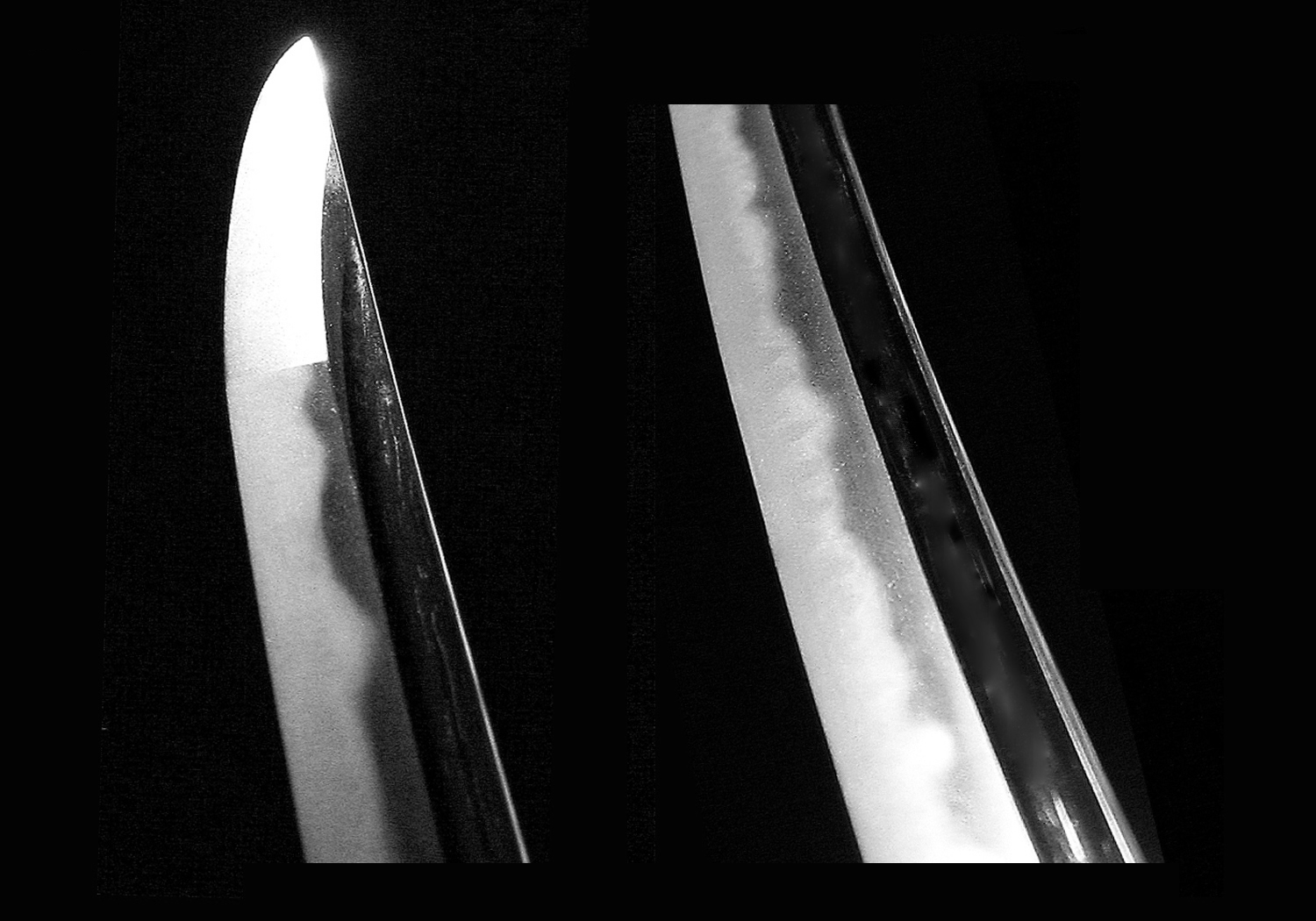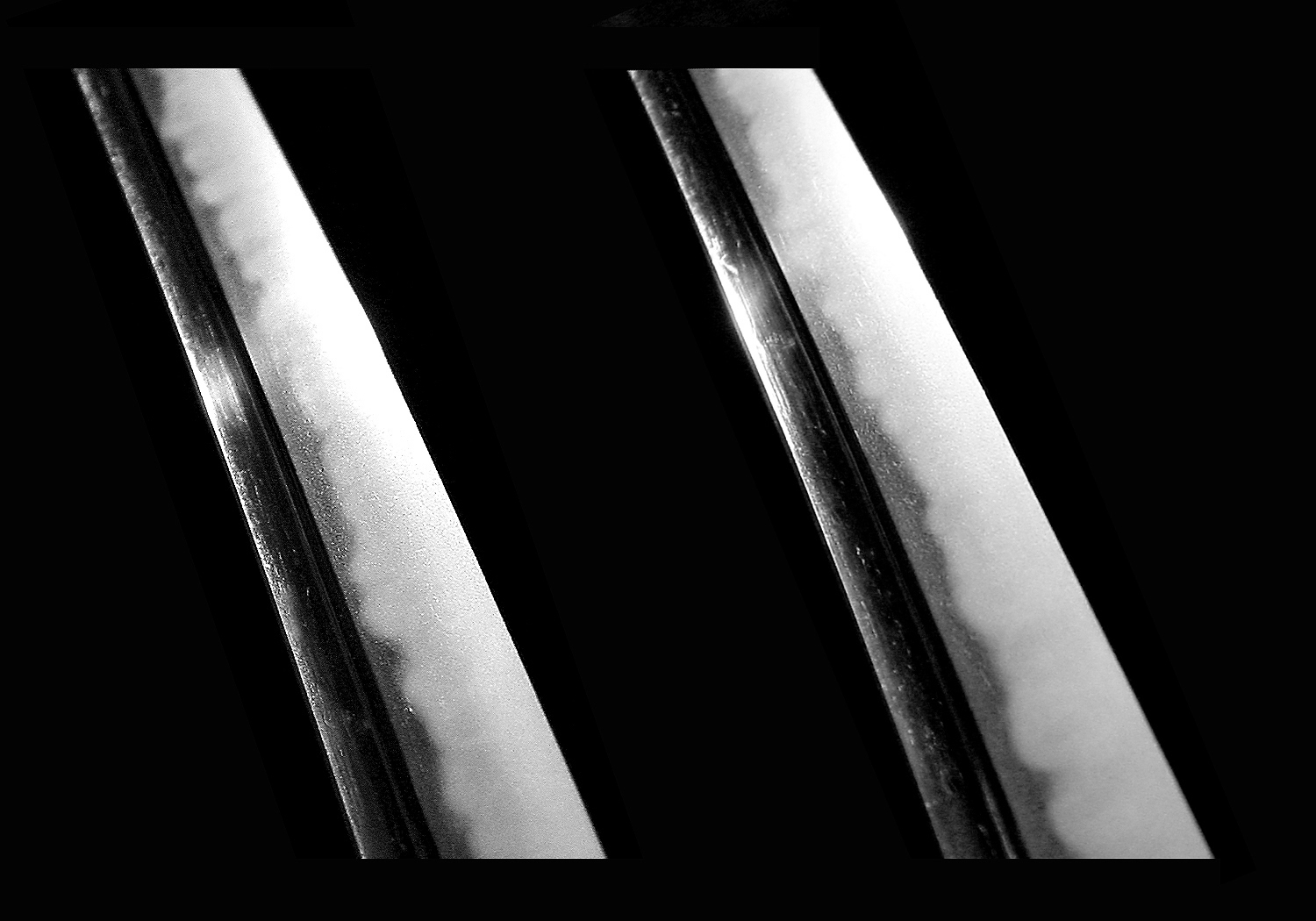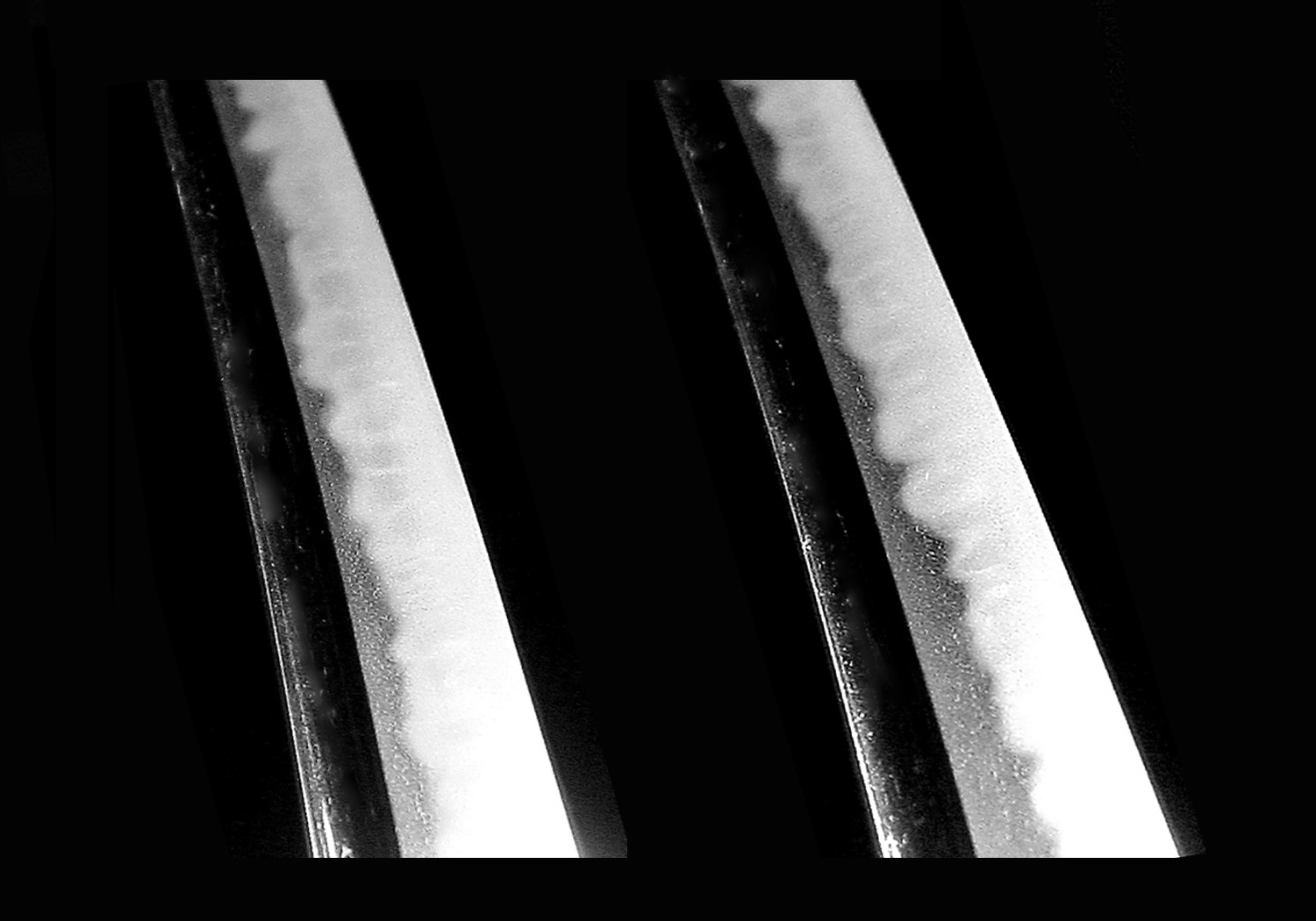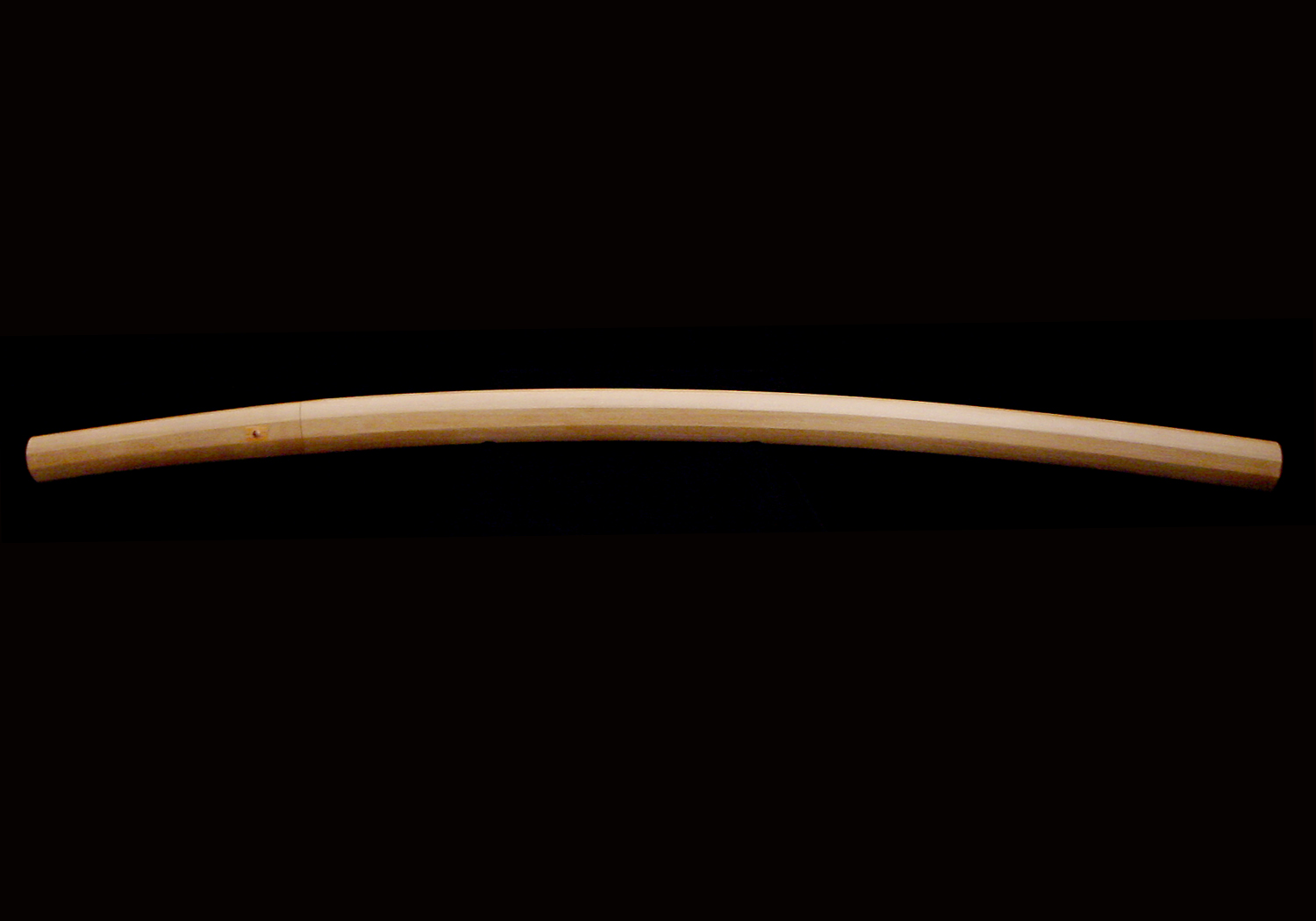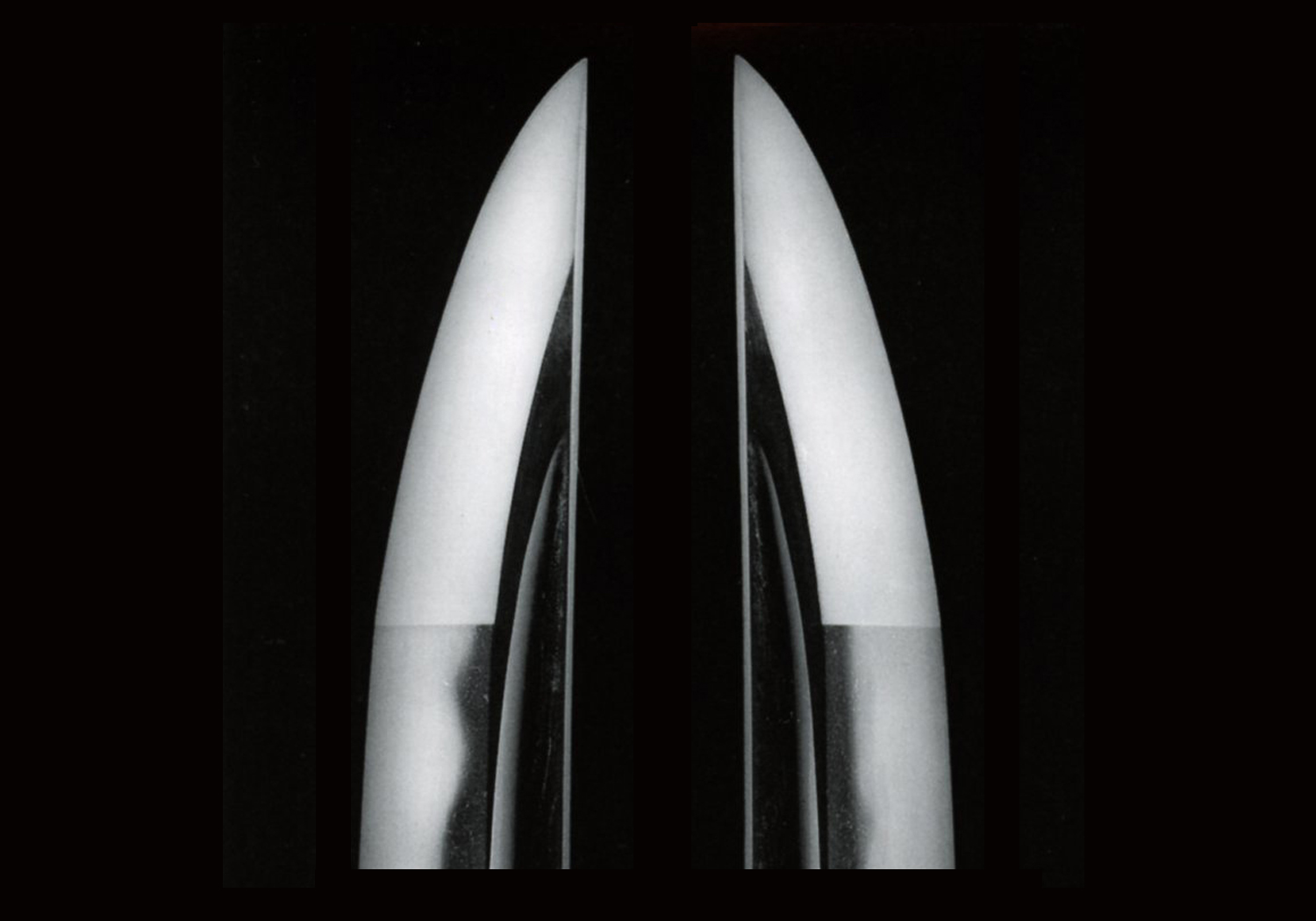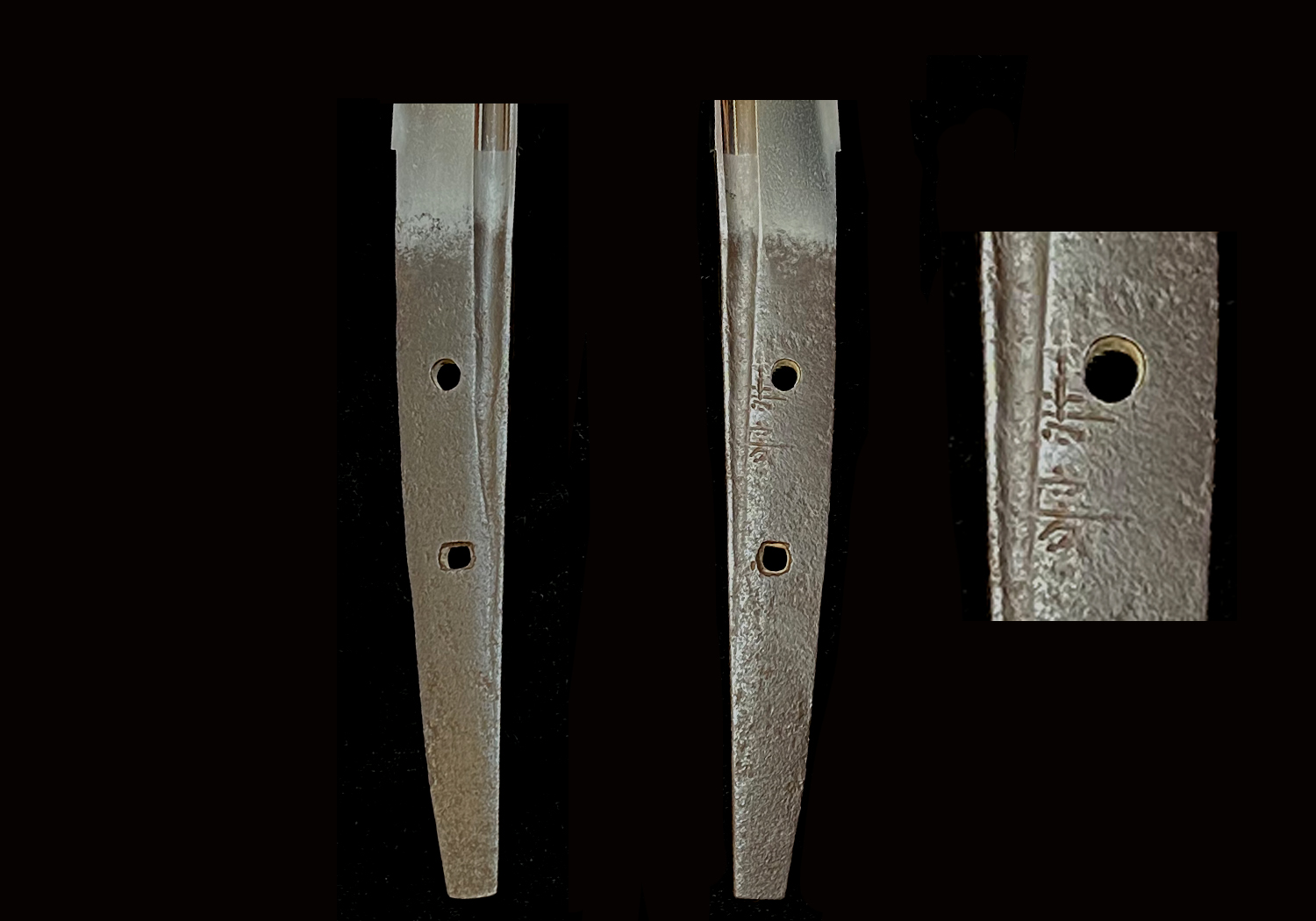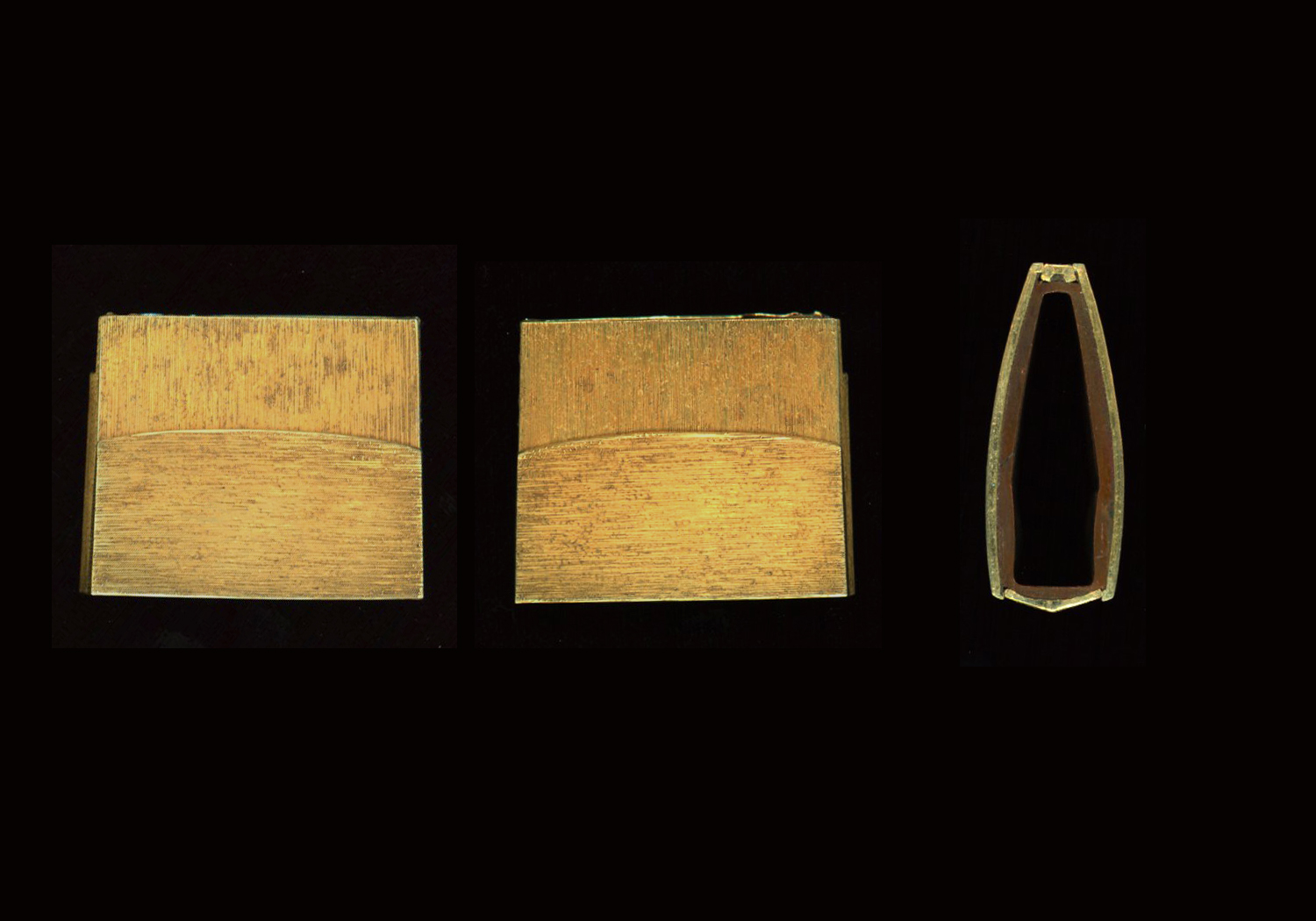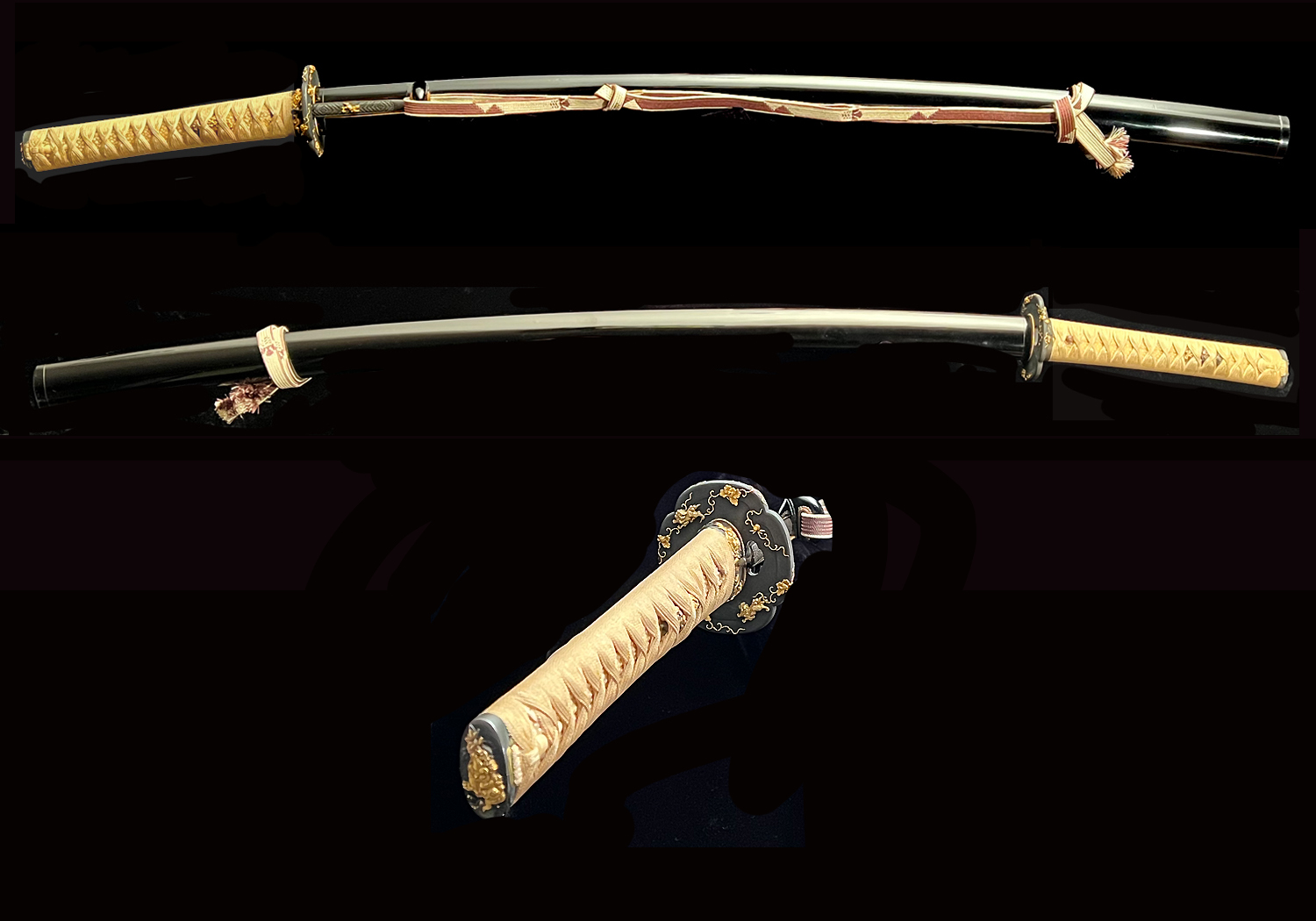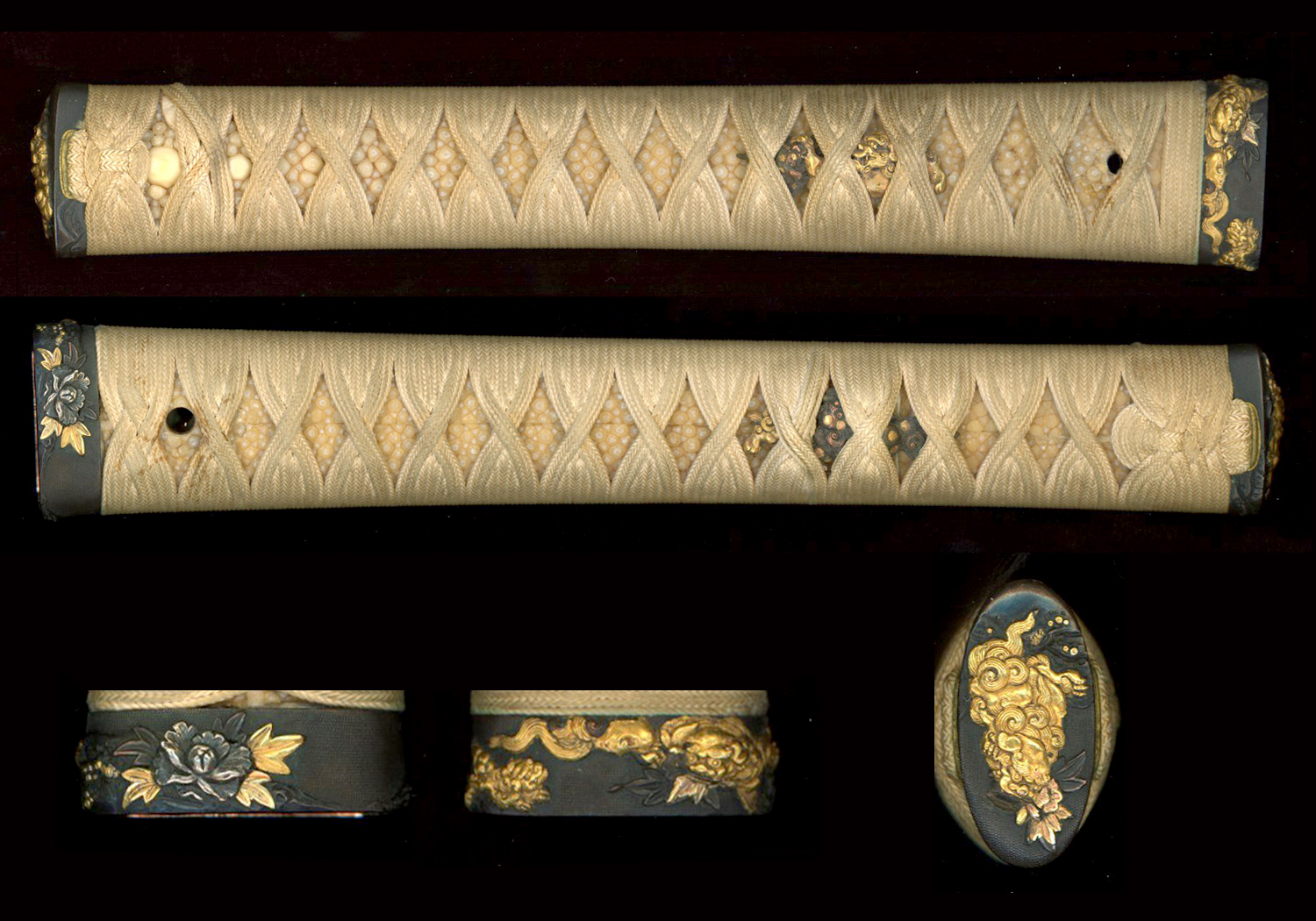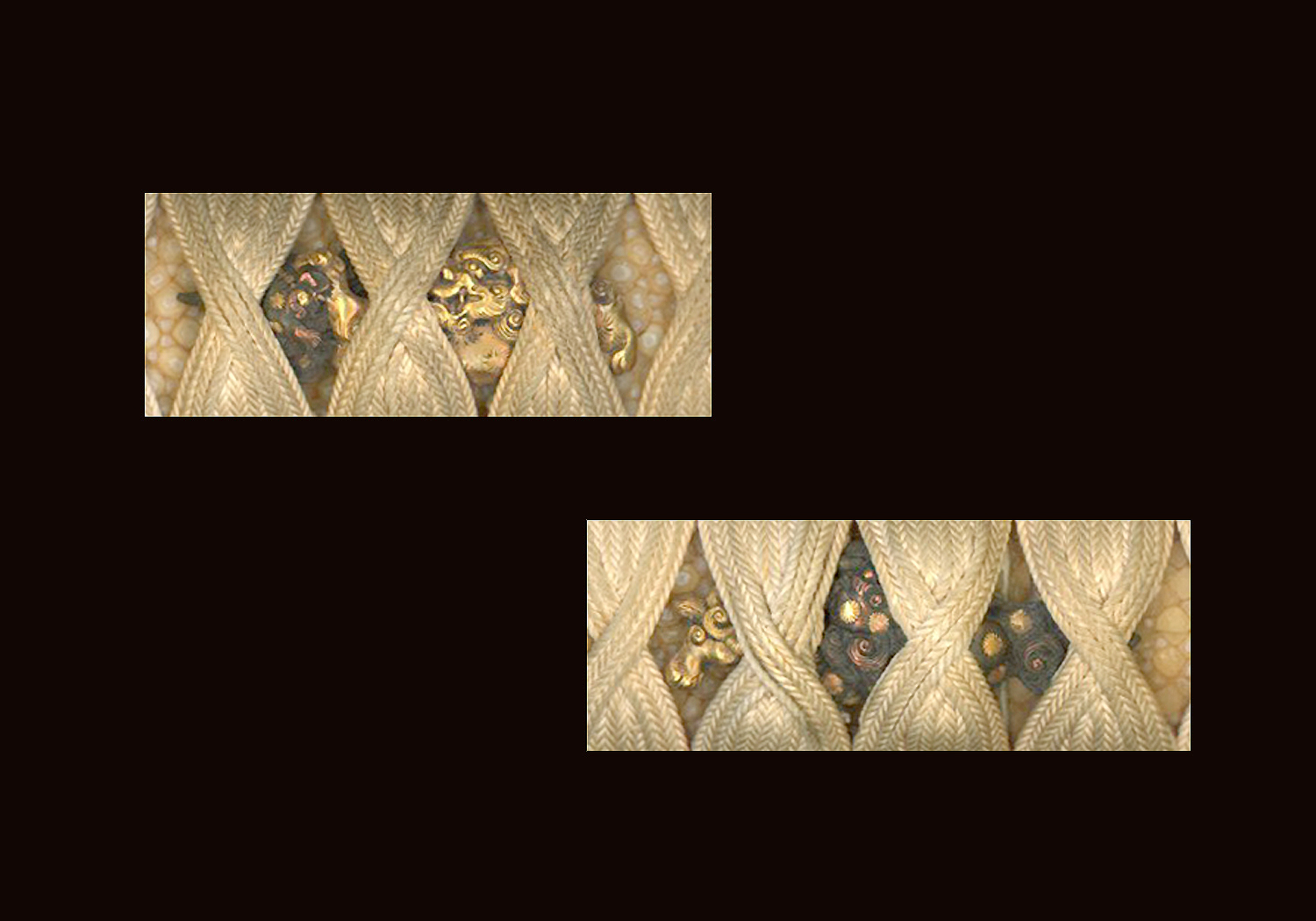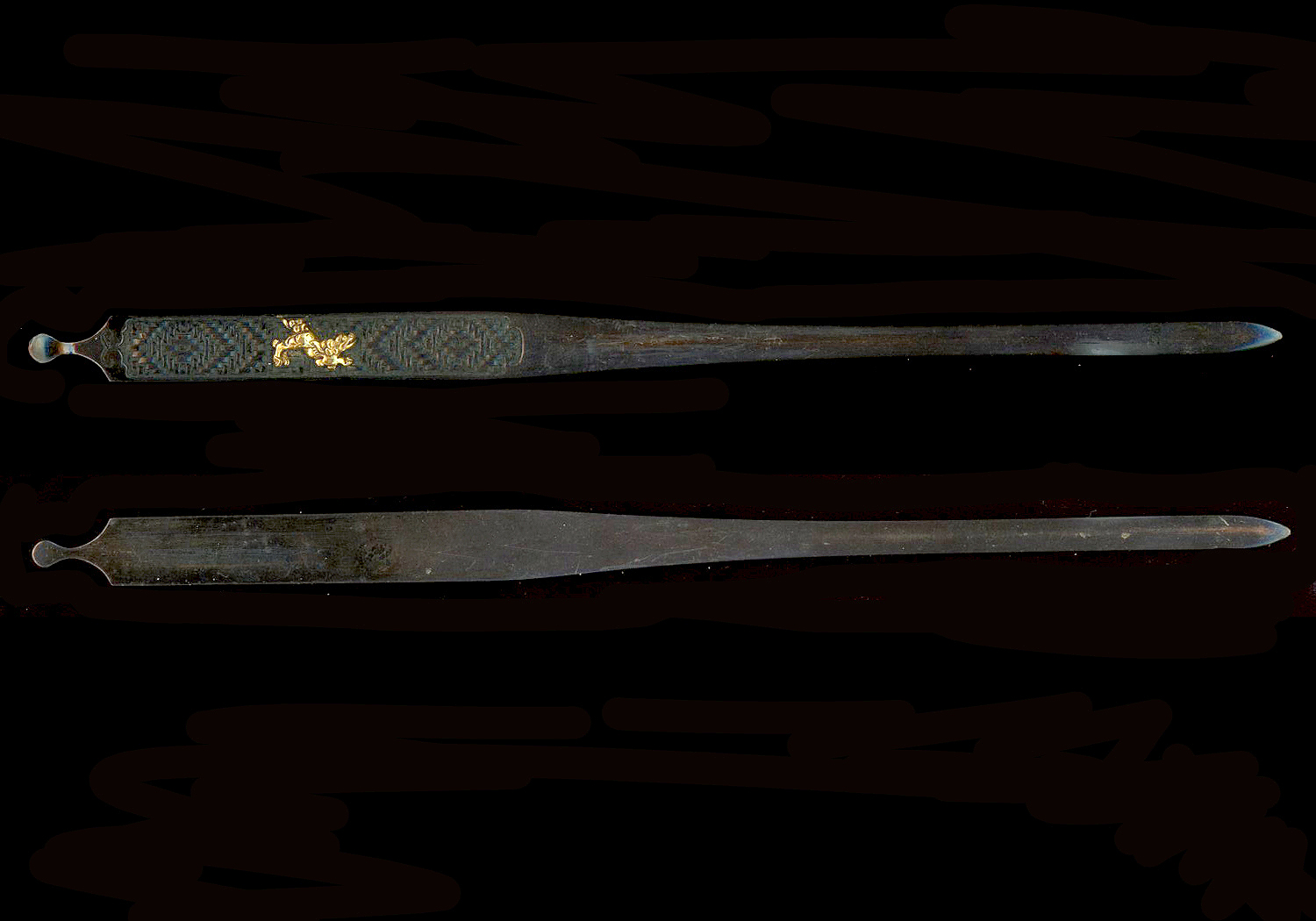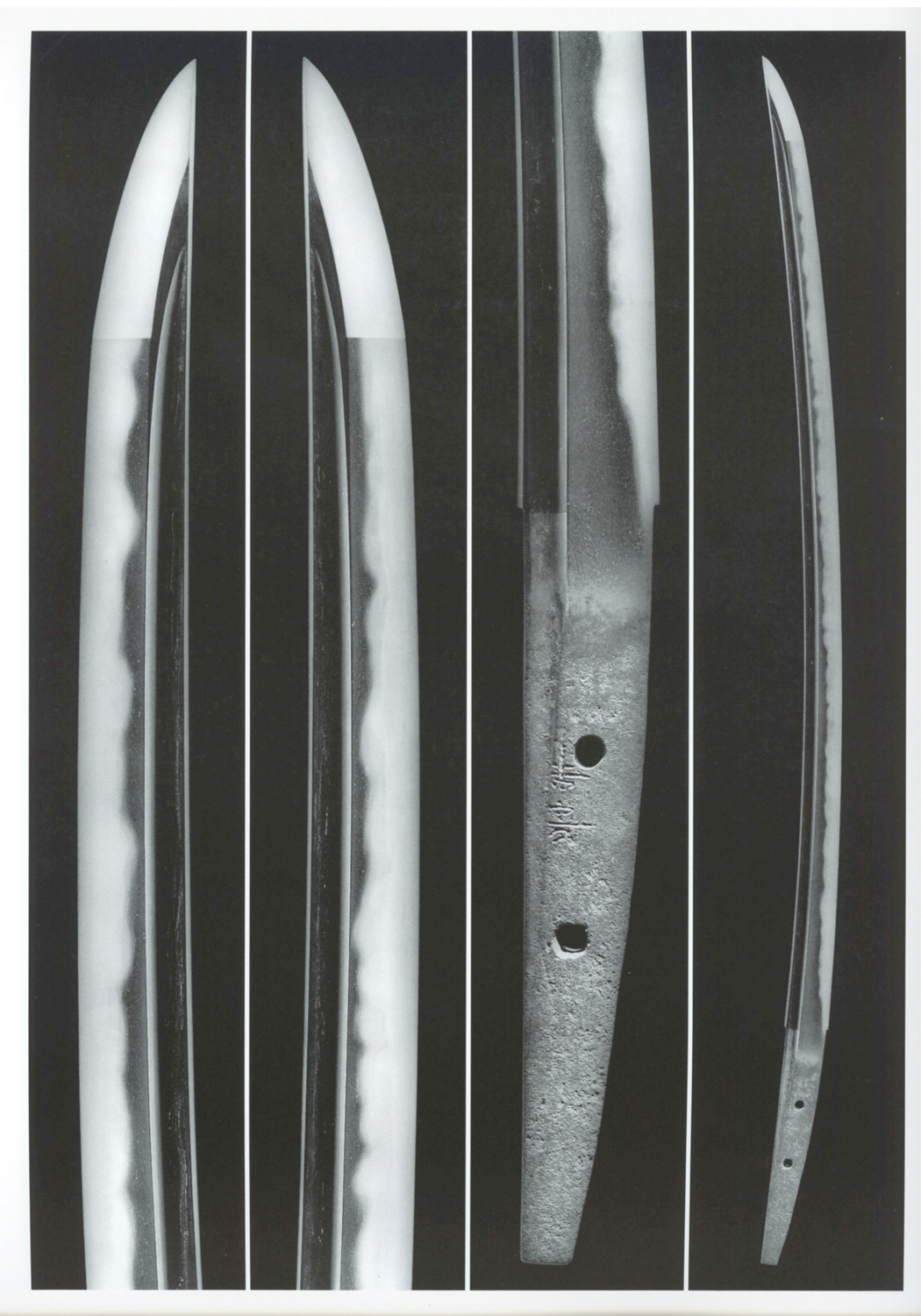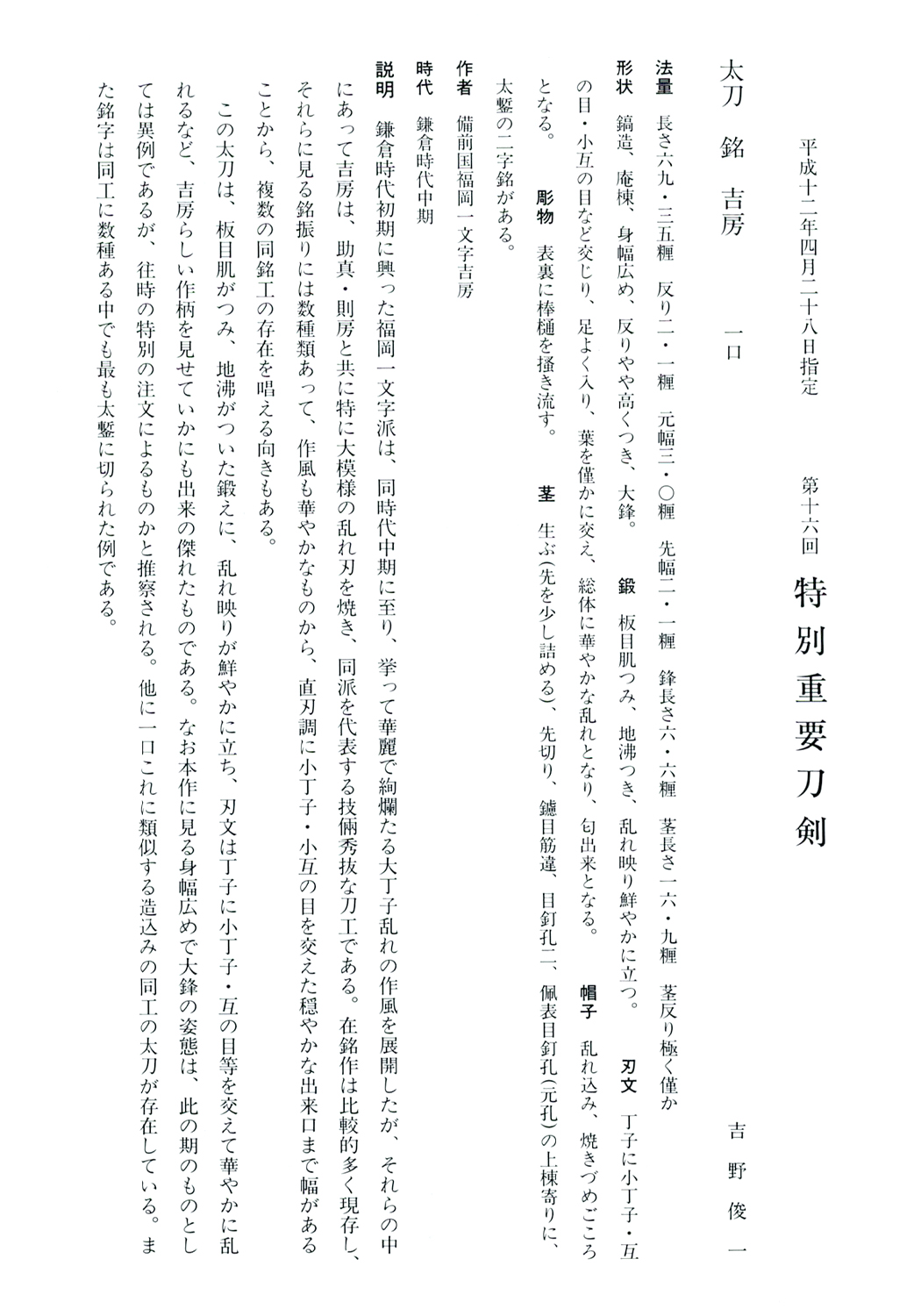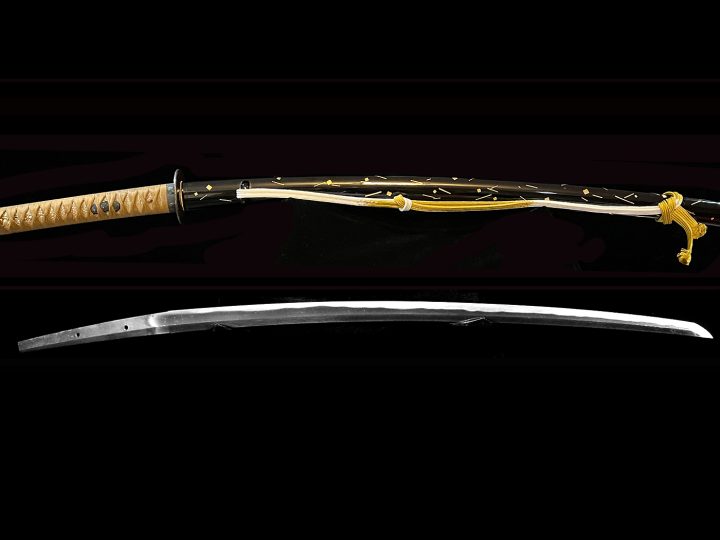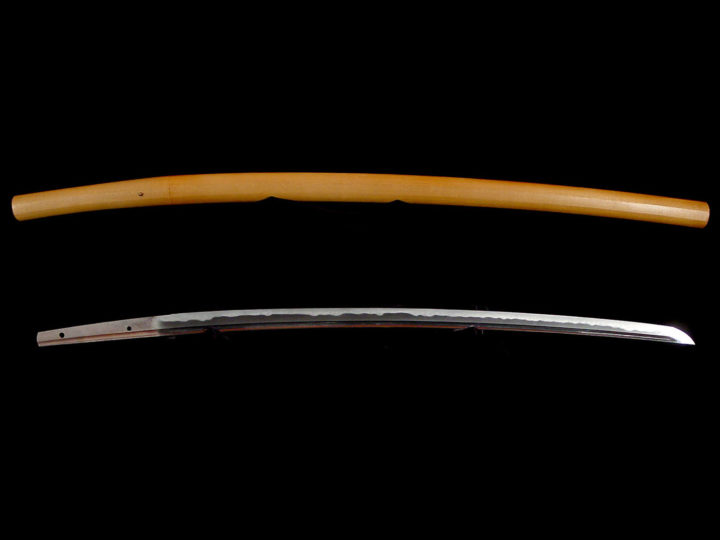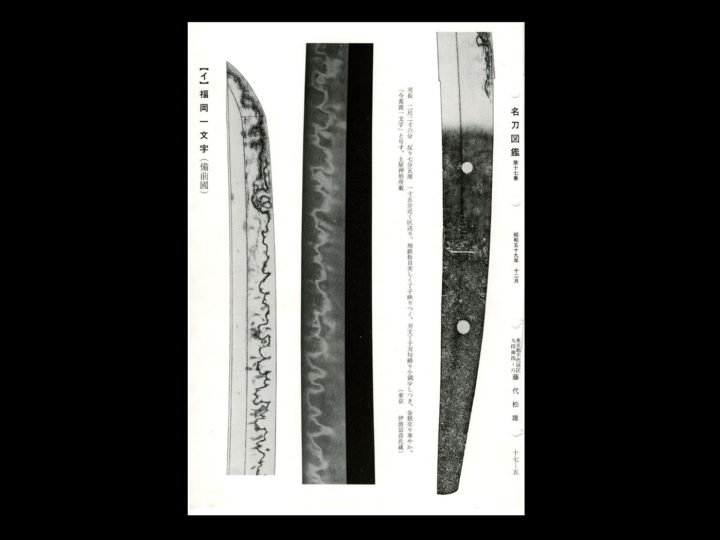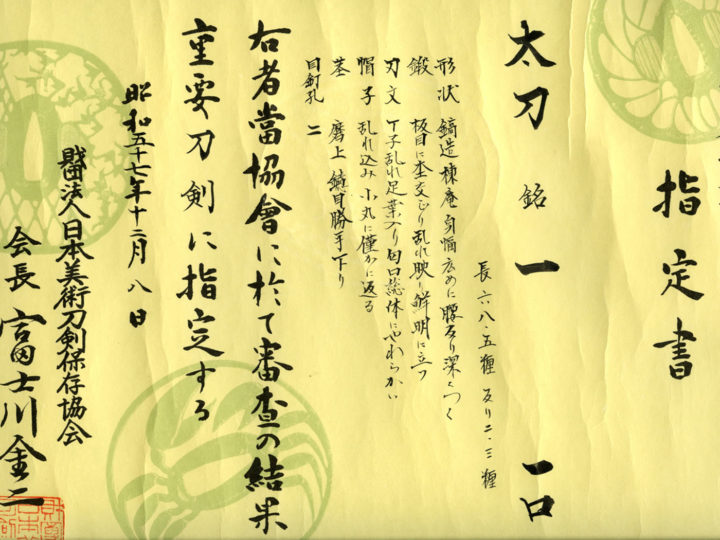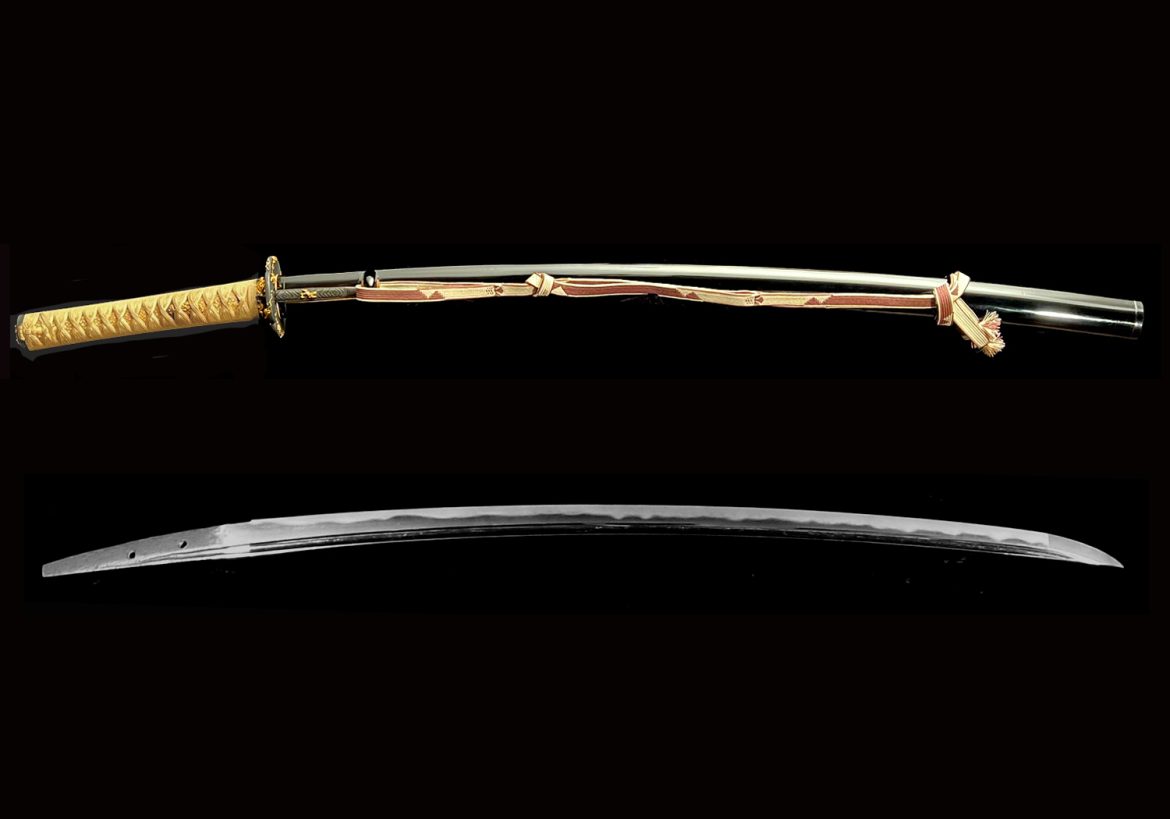
The Ichimonji School (一文字) in Bizen Province was a large school that was founded in the beginning of the Kamakura period (late 12th century) and lasted through the Nanbokucho period. From the beginning of the Kamakura period and up until the middle of the Kamakura period, works by this school are commonly referred to as Ko-Ichimonji (古一文字)works. From the beginning of the Kamakura period and through the middle of the Kamakura period, the center of the production done by this school was located in the area called Fukuoka (福岡). From the end of the Kamakura period and through the early part of the Nanbokucho period, the center of production moved to Yoshioka (吉岡). Around the Shochu era (1324-1326) another branch of the Ichimonji school sprang up in Iwato (岩戸) in Bizen. This branch is called the Iwato Ichimonji (岩戸一文字). Since it was most active around the Shochu (正中) era, it is also called the Shochu Ichimonji school (正中一文字). Around 1225, Norifusa (則房) is said to have founded Katayama Ichimonji school (片山一文字) when he moved to Katayama (片山) from Fukuoka (福岡).
The name of the school is derived from the fact that many of the swords extant today are signed only with the kanjicharacter “Ichi” (一). There are also examples of swords bearing both the kanji character “Ichi” (一) as well as the name of the smith himself.
Norimune (則宗) has long been highly reputed to be the symbolic founder of the Fukuoka Ichimonji School (福岡一文字). His early swords were of the Ko-Ichimonji (古一文字) style that had a modest sori, a nioi based hamon of sugubamixed with ko-midare and ko-choji lined with plenty of nie and embellished with varied nie structures in the ji of hotsure, sunagashi, and kinsuji.
Around the middle of the Kamakura period the shape and workmanship style changed to become more flamboyant with a more robust sugata and large and closely packed choji formations known as juka-choji, o-choji midare, o-busa choji, etc. These are the swords that we commonly refer to as being of the Fukuoka Ichimonji School (福岡一文字). Yoshifusa (吉房) represented the school at its height along with Sukezane (助真) and Norifusa (則房). As is clear from the fact that Yoshifusa (吉房) is represented by as many as five tachi with the Kokuhô (National Treasure) designation, two tachi that have been designated as Jûyô Bunkazai (Important Cultural Properties), and a further four tachi and one katana that have been designated as Jûyô Bijitsuhin (Important Art Objects); he was by far one of the most skilled artisans of this school.
The other notable smiths who followed or were contemporary with Yoshifusa (吉房) were Sukezane (助真), Norifusa (則房), Yoshiiye (吉家), Sukefusa (助房), Nobufusa (信房), Yoshimune (吉宗), and others developed what we today refer to as the Fukuoka Ichimonji (福岡一文字) style. These smiths produced the nioi dominant hamon consisting of o-busa, juka, kawazuka, and kukuro variations of choji-midare tempered in diversified widths and heights. The vivid midare-utsuri in the ji further increases the gorgeous and magnificent quality of their works.
| Sugata: | The tachi sugata is grand but not excessive, it remains elegant. They are typically shinogi-zukuri, iori-mune with koshi-zori. There will be some funbari ending in a medium sized kissaki in the ikubi style
|
| Hamon:
Jitetsu: |
Narrow ko-choji is rare. Typically, the hamon will be a robust choji-midare which will be in the form of a combination of juka, kawazuko, gunome, and other variations. The width of the hamon will vary. The predominately nioi structured nioi-guchi is lined with fine ko-nie and contains a great many ashi and yo. Sunagashi, kinsuji, and other forms of nie-based hataraki will be seen.
The kitae is mainly tight itame-hada mixed with mokume-hada. Occasionally a slight amount of o-hada or loose-grained area will be present. There will be pronounced utsuri in the form of choji-utsuri, midare-utsuri, jifu-utsuri or botan-utsuri.
|
| Bôshi: | The boshi will tend to be somewhat stubby or ikubi in shape. It is midare-komi and in proportion to the hamon and will be either yakitsume or have a short kaeri.
|
| Horimono: | Original horimono will not be found with the exception of bo-hi or futatsu-hi. The top of the hi will be sharp and well shaped. The bottom of the hi becomes maru-dome, kaku-dome, or kaki-nagashi. |
Kantei Points: A sugata that is grand but not excessive with strong koshi-zori itame hada with a mixing in of mokume hada and utsuri will lead one to the Bizen school of the Kamakura period. The bôshi will be ikubi and this will strengthen the opinion that we are talking about the Kamakura period. Strong and wild juka chôji-midare with a mixing in of kawazuko and gunome should take us to the Fukuoka Ichimonji school.
The signatures of Yoshifusa showed a considerable amount of variation over his years of production. Among the varied signatures belonging to Yoshifusa, the most numerous can be consolidated into two general categories. The first signature style is generally smaller and cut with relatively thinner chisel strokes and the latter is formed of larger characters done in thick chisel strokes. Generally speaking, the most exuberant types of hamon are found in the former type of signature and a relatively quieter workmanship is represented in the latter.
When a sword is tempered to have large and elaborate patterns, the jigane tends to have a coarse and hadadachi quality. However, all of the swords by Yoshifusa whether they have a robust and exuberant hamon or a quieter type have exceptionally tight, refined grain (jihada) to testify to Yoshifusa’s exceptionally high skill.
This example of Yoshifusa is a superb blade that is done in the style exhibiting the smaller mei cut with a thick chisel. The blade is described in the Tokubetsu Jûyô zufu as follows: This tachi shows a densely forged itame that features ji-nie and a vivid midare-utsuri, and the hamon is a flamboyant midareba in chōji, that is mixed with ko-chōji, gunome, and other elements, which both reflects an excellent deki, that is typical for Yoshifusa. The shape with its wide mihaba and ō-kissaki, however, is atypical for this time period, but it is possible that the blade goes back to a special order.
We are also extremely fortunate to have this example that is ubu (unshortened) allowing us to view this blade and its beautiful and strong sugata just as it was made over 800 years ago.
This blade has been awarded both NBTHK Jûyô Tôken and NBTHK Tokubetsu Jûyô Tôken status. The translation of the 42nd Jûyô shinsa from November 14,1996 is translated as follows:
Jūyō-Tōken at the 42nd Jūyō Shinsa from November 14, 1996
Tachi, mei: Yoshifusa (吉房)
Measurements:
Nagasa 69.3 cm, sori 2.0 cm, motohaba 3.0 cm, sakihaba 2.1 cm, kissaki-nagasa 6.6 cm, nakago-nagasa 16.8 cm, no nakago-sori
Description:
Keijō: shinogi-zukuri iori-mune, relatively wide mihaba, rather deep sori, ō-kissaki
Kitae: densely forged itame that features ji-nie and a vivid midare-utsuri
Hamon: overall flamboyant midareba in chōji and hardened in nioi-deki, that is mixed with ko-chōji, gunome, ko-gunome, and ashi
Bōshi: midare-komi and tending to run out as yakitsume
Horimono: on both sides a bōhi that runs as kaki-nagashi into the tang
Nakago: ubu, kirijiri, sujikai-yasurime, two mekugi-ana, the haki-omote side bears right below of the first mekugi-ana and towards the mune a relatively thickly chiseled niji-mei
Explanation:
Swordsmiths from the mid-Kamakura period Fukuoka-Ichimonji (福岡⼀⽂字) School are known for hardening in general a very flamboyant ō-chōji-midare , but particularly Yoshifusa (吉房), Sukezane (助真), and Norifusa (則房) are known for a noticeably large dimensioned midareba and are thus regarded as representative masters of this school. There are relatively many signed works of Yoshifusa extant and we recognize different signature styles. Also, the workmanship of these blades ranges from flamboyant interpretations to a calm suguha-chō mixed with ko-chōji and ko-gunome, a fact that gave rise to the theory that there were several smiths with that name.
This tachi shows a densely forged itame that features ji-nie and a vivid midare-utsuri, and the hamon is a flamboyant midareba in chōji, that is mixed with ko-chōji, gunome, and other elements, which both reflects the typical deki of Yoshifusa. The shape with its wide mihaba and ō-kissaki, however, is atypical for this time period, but it is possible that the blade goes back to a special order. There exists one other tachi by Yoshifusa in this shape. Also, the mei seen here is a match with one of the known Yoshifusa signature variants.
This blade was further awarded the rank of Tokubetsu Jûyô Tôken at the 16th Tokubetsu Jûyô shinsa that was held on April 28, 2000. The following is a translation of the zufu from that shinsa:
Tokubetsu Jūyō-Tōken at the 16th Tokubetsu-Jūyō Shinsa from April 28, 2000
Tachi, mei: Yoshifusa (吉房)
Measurements:
Nagasa 69.35 cm, sori 2.1 cm, motohaba 3.0 cm, sakihaba 2.1 cm, kissaki-nagasa 6.6 cm, nakago-nagasa 16.9 cm, only a hint of nakago-sori
Description:
Keijō: shinogi-zukuri iori-mune, wide mihaba, rather deep sori, ō-kissaki
Kitae: densely forged itame that features ji-nie and a vivid midare-utsuri
Hamon: overall flamboyant midareba in chōji and hardened in nioi-deki, that is mixed with ko-chōji, gunome, ko-gunome, and many ashi
Bōshi: midare-komi and tending to run out as yakitsume
Horimono: on both sides a bōhi that runs as kaki-nagashi into the tang
Nakago: ubu (just the tip was slightly shortened), kirijiri, sujikai-yasurime, two mekugi-ana, the haki-omote side bears above of the second, the ubu-mekugi-ana and towards the mune a thickly chiseled niji-mei
Artisan: Fukuoka-Ichimonji Yoshifusa from Bizen province
Era: Mid-Kamakura period
Explanation:
The Fukuoka-Ichimonji (福岡⼀⽂字) School, which had emerged in the early Kamakura period, hardened by the mid-Kamakura period in general a very flamboyant ō-chōji-midare, but particularly Yoshifusa (吉房), Sukezane (助真), and Norifusa (則房) are known for a noticeably large dimensioned midareba and are thus regarded as representative masters of the highest skill within this school. There are relatively many signed works of Yoshifusa extant and we recognize different signature styles. Also, the workmanship of these blades ranges from flamboyant interpretations to a calm suguha-chō mixed with ko-chōji and ko-gunome, a fact that gave rise to the theory that there were several smiths with that name.
This tachi shows a densely forged itame that features ji-nie and a vivid midare-utsuri, and the hamon is a flamboyant midareba in chōji, that is mixed with ko-chōji, gunome, and other elements, which both reflects an excellent deki, that is typical for Yoshifusa. The shape with its wide mihabaand ō-kissaki, however, is atypical for this time period, but it is possible that the blade goes back to a special order. There exists one other tachi by Yoshifusa in a very similar shape. Incidentally, the signature belongs to the group of mei known by this smith that are chiseled in the thickest manner.
